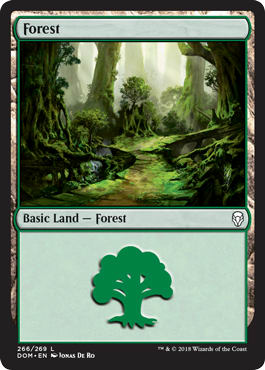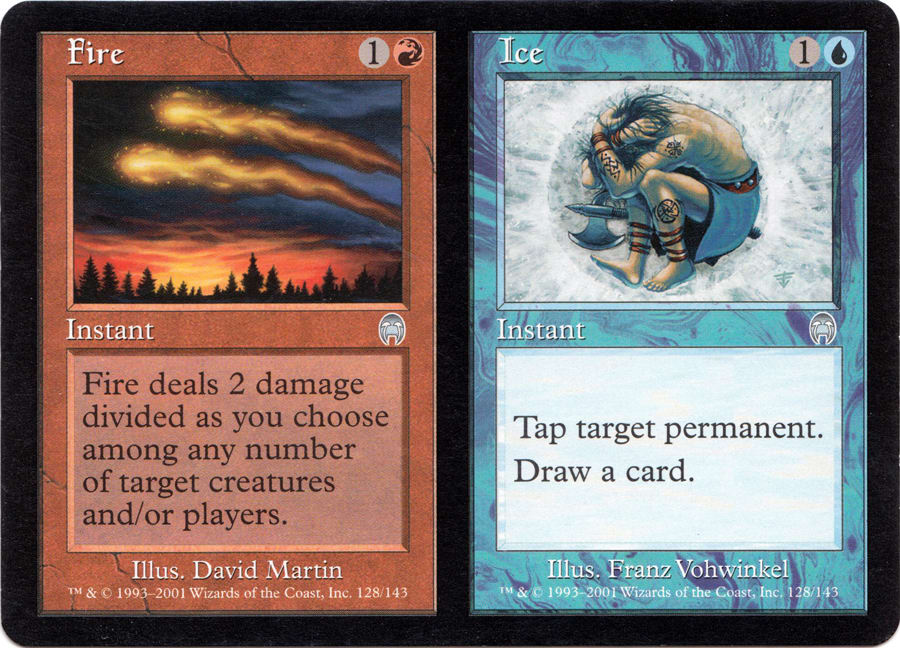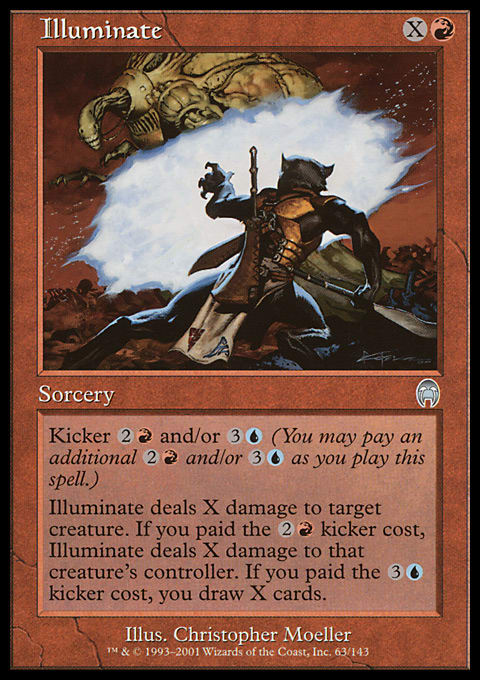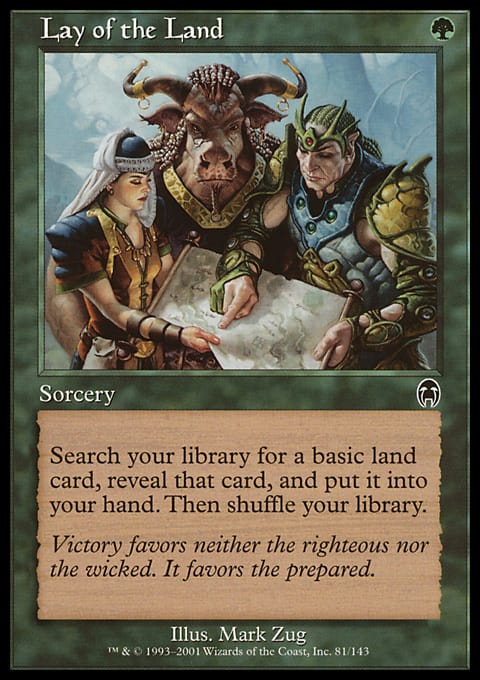I love Highlander. I once called it my favorite casual format of all time. It makes everything better. Can you imagine Commander without Highlander? It’s just not the same. Add it to casual and multiplayer decks for a lot of fun. Highlander says you can only play one of each card except for basic lands (and perhaps Shadowborn Apostle and Relentless Rats).
I’ve always wanted to play a different deck though. A hardcore Highlander deck . . .
What is Hardcore Highlander?
In Hardcore Highlander, every single card is kept to just one copy, just like Highlander. The only difference is that even basic lands are just held to one copy of each card. So your deck can have one Swamp, Mountain, Forest, Island, and Plains, and that is it. (It can also have one snow-covered version of those lands, too, and this also includes the possible corner-case cards mentioned above.)
That means you cannot have more than two of each basic land type in your deck: one snow-covered and one naked.
Imagine for your next Commander night that everyone had to Hardcore Highlander their decks. How would you manage it? It would hit some decks (such as a mono-colored deck) harder than others. It would be tough to find enough lands that just tap for your color of mana (because you cannot run something like Plateau in a mono-red deck in Commander). You would be relegated to cards like Barbarian Ring and Madblind Mountain and Hammerheim.
So that’s rough, right? Right?
Now here is the point of today’s article. I want to build a Hardcore Highlander deck that is casual-friendly and uses all five colors. The goal is to make the largest possible deck within a few rules. Here they are:
The Colors!
How do I make a deck a five-color deck?
At least 10% of the nonland cards in the deck need to be from each color. Now, I know from my vast experience with the Five Color format that people will often cheat these requirements. Perhaps I want to remove red from my deck. So I will put in cards like Fire // Ice that technically count as red—but I can just play the blue half. Or I might add in a red card with a hybrid cost and just play it with the other side (such as Firespout). Another idea might be to run a red card with a colorless cycling cost, such as Scrap. The result is that my 10% of red cards could be mostly playable without any red mana at all.
Well, that’s not really in the flavor of this challenge. In order to count for my 10% of that color, all of the cards I use cannot be played or cycled without using the color I am counting it as. So, for example, I could run Slice and Dice as a red card because it requires a red mana for cycling. However, Starstorm does not count as a red card. Nothing prevents me from running a Starstorm—it just can’t be in my 10% red section. It has to be in the other 50% of my nonland cards.
Now, I have another issue with gold cards. I could just run a decent number of gold cards with a very large number of colors and thus reduce my color requirements significantly. Imagine, for example, that I had a deck with one hundred cards, forty of which were lands. Of the remaining sixty cards, at least six must be red, six green, six blue, six black, and six white. The remaining thirty cards can be any color, artifacts, or whatever. Imagine that this deck ran six five-color cards (such as Fusion Elemental). As a result, it has six cards that count as my colors, and now I am free to run anything I want in the last fifty-four cards. That’s not really the flavor of the challenge either.
Thus, a gold card can only be counted for one color when determining the 10% ratio.
Therefore, I have the following rules for color:
- 10% of the nonlands must be of each color.
- Each card may only count for one color—no matter how many colors it may cost to play
- All costs, cycling, and such must be playable with that color in order to count toward that color’s 10%.
So, for example, Illuminate may count as a red card, but not a blue one. Transguild Courier cannot count as any color, and neither can Fire // Ice. However, Supply // Demand can count as a white card because both halves require white to be used. Advice from the Fae cannot count as a blue card, nor can Chartooth Cougar count as a red card. Note that lands also do not count as colors since this list specifically looks at nonland cards. (Even though Secluded Steppe can be cycled for a white mana, it is not a white card. Even though is it green, Dryad Arbor does not for your 10% green—it is a land.) I tried to include every corner case, but the basic idea is simple. Play a lot of each color, and you can completely ignore this list. It’s only here because a lot of players like to take a new format and then try to break it by building decks that violate the spirit of the format, but not the rules.
I have to admit—I have done the same. For a Saint Patrick’s Day tournament that required you to have every card in your deck green, I added some other-colored lands and ran Thornscape Battlemage and Granger Guildmage. I won the tournament. So I get it. The fact that I mention that there are some who seek to push a format past the spirit and up against the rules does not mean that I am complaining. I just understand that, and so I hope I have locked off any potential route of violation.
The Hardcore Highlander Challenge
Now, I just jumped through all of those gymnastics for one simple reason: I want to challenge you. What is the largest Five Color Hardcore Highlander deck you can build and still be viable?
I want to see!
So I am going to build my own Five Color Hardcore Highlander deck. It’ll obviously take a while. One month from today, I’ll publish it for you. Why not build your own alongside mine? If you like deck challenges, this is a big one. If you want to, hit me up at euplatious at hotmail dot com. Just send your deck to me in Google docs or Excel or Word or whatever. I’ll need some time to look over the decks and then publish some of the highlights in that future article when I also publish my own take on the challenge.
I will be judging these entries on sticking to the rules and being viable.
So what do I mean when I say viable?
Imagine you cut-and-pasted me a list of every Magic card in existence and sent it as a decklist. Well, that’s cute, but it’s not viable. Viable means that I can shuffle it up and play it today with the ability for it to work and win. Every single deck in Magic can be mana-flooded or -screwed or have bad draws. But a viable deck should not have that happen very often. Imagine a Commander deck. Sometimes it fails, but it usually works. Your deck should usually work—that is viable.
Your deck needs to be large and viable. Those decks that maximize both will be acknowledged as the best entries, and I’ll choose a winner to receive a completely nonexistent prize.
Now, in order to jumpstart your engines, and to demonstrate the sorts of issues that a deck project like this will have, let’s talk about one issue: mana.
How do you bring the right mana sources into play? Conventional wisdom leans on cards such as Cultivate or Lay of the Land. But they can only fetch ten lands in the entire deck. You can’t play too many or else they will be dead cards.
Similarly, a card like Ranger's Path or Nature's Lore can fetch the two basic Forests or something like a Savannah. But still, there will be a small number of copies of Forests in the deck. How many of these do you run?
What is the right ratio of land-search to the cards we have available? You don’t want to draw dead with a Kodama's Reach in your hand, and yet, you need to have the right mana available to cast things.
So, I think cards that can both search for mana and do other things are good choices. Consider Elvish Aberration. Sure, there might only be a handful of Forests in the deck, but it still can be played for a 4/5 creature if you have them all. The same is true of something like Krosan Tusker, Sakura-Tribe Elder, and Solemn Simulacrum. They can be used for things besides fetching mana. Thus you can keep your dead draws off an Explosive Vegetation or Farseek to a minimum.
And this is just one issue that happens with Five Color Hardcore Highlander. With this savaged mana base, how big can you go? Most of your lands will have significant tempo losses (such as Rith's Grove, Golgari Rot Farm, and Elfhame Palace).
Now, you are not making this deck in real life. So I expect everyone’s mana base will begin with thirty cards: the twenty dual lands and two of each basic (counting the snow-covered). After that, there are some obvious choices I will not belabor here. But how far do you push the deck? Do you find yourself in territory with cards like Caldera Lake? Do you even play colorless lands? If so, how many can you get away with without watering down your mana too much?
And with all of these mana issues, can you afford to run cards with triple-mana costs? What about double ones? How about a gold card from three colors—that’s sort of like a triple mana cost in one color?
Frankly, I think building your mana base is the key to unlocking the challenge. That is your first focus. That’s where I am starting.
In the meantime, start thinking about the deck and what cards to include. If you have any questions about the challenge that I forgot to think about when writing today’s article, just ask them in the comments, and I’ll be happy to answer them for everyone. I’ll also remind you as the deadline for applications looms.
I think Five Color Hardcore Highlander is an interesting way to take your decks to another level. If you are enjoying the many powers of Highlander at your casual table, why not consider going full force and dialing back those basics, too? I mean, only real Magic players go all the way with their Highlander decks!
See you next week,
Abe Sargent




























